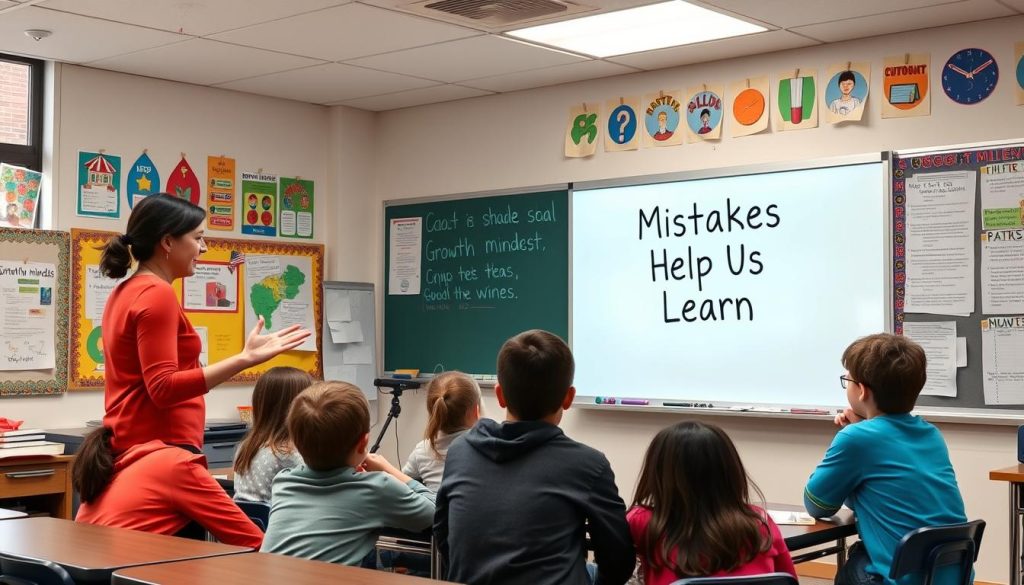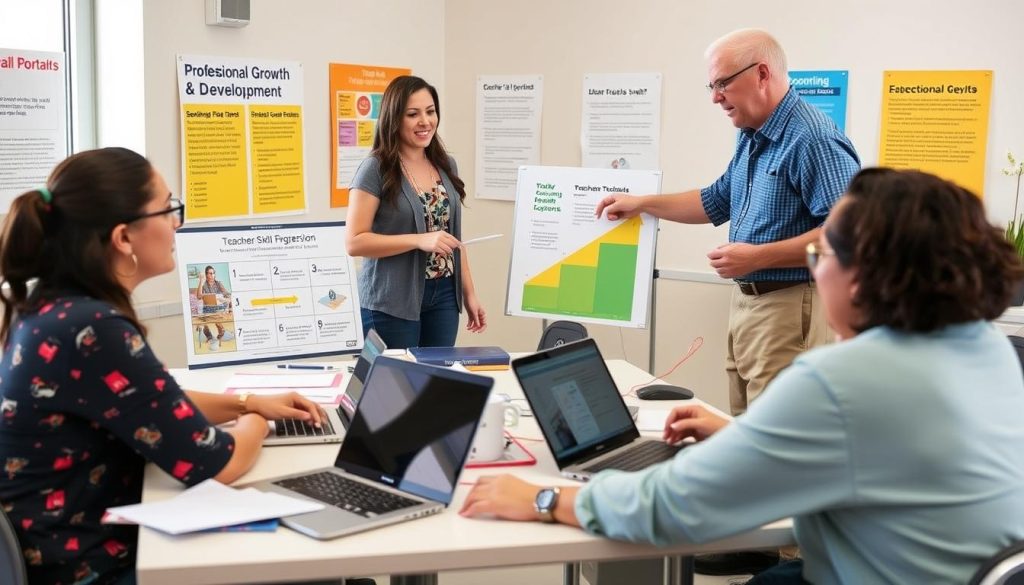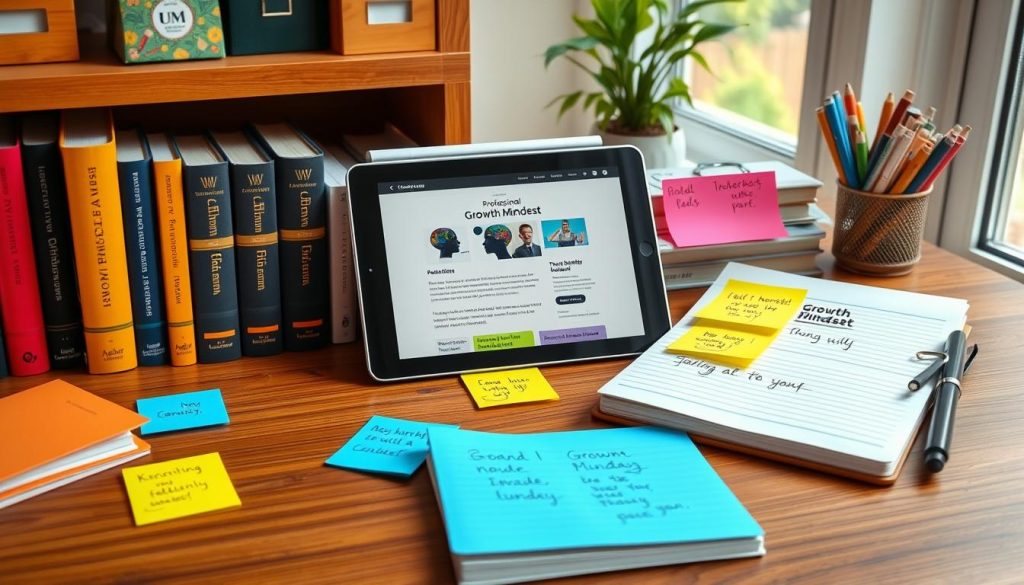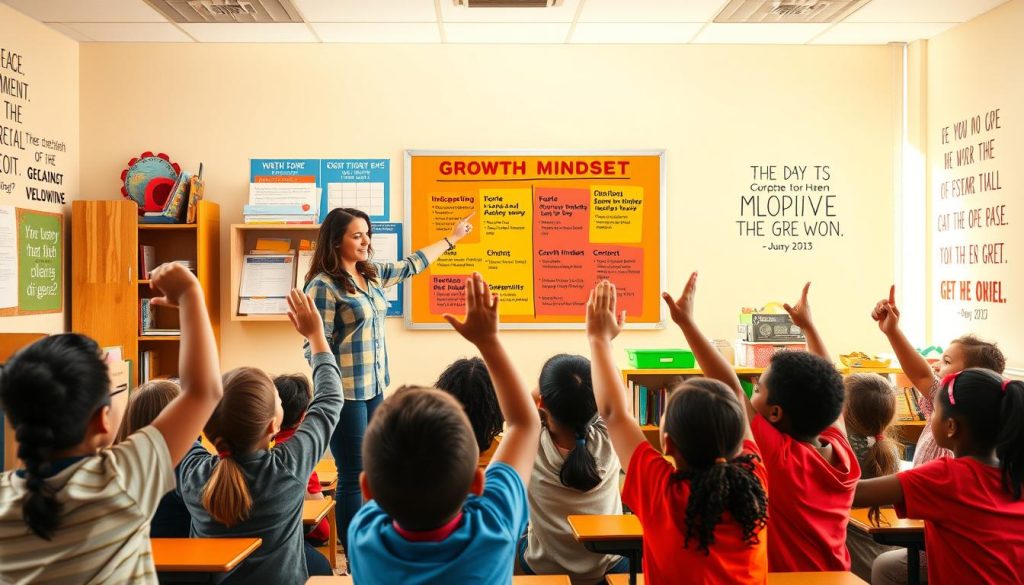Why Building a Growth Mindset Matters for Teachers
The concept of mindset, pioneered by Stanford psychologist Dr. Carol Dweck, has profound implications for education. Teachers with a growth mindset believe their teaching abilities can improve through effort, feedback, and persistence. This contrasts with a fixed mindset, where abilities are seen as static traits that cannot be significantly developed.
Research from the Mindset Works organization shows that teachers who embrace a growth mindset are more likely to seek innovative teaching strategies, persist through challenges, and maintain higher expectations for all students. These teacher skills directly impact student achievement and classroom culture.
Building a growth mindset as an educator offers several key benefits:
- Increased resilience when facing teaching challenges
- Greater willingness to experiment with new instructional approaches
- More effective responses to student struggles
- Enhanced ability to provide constructive feedback
- Improved classroom management techniques
- Stronger relationships with students and colleagues
When teachers develop these mindset-oriented teacher skills, they create classroom environments where effort is valued over perfection and challenges are viewed as opportunities rather than threats. This shift transforms not just how you teach, but how students approach their own learning journey.
Enhance Your Growth Mindset Teaching Skills
Discover research-based strategies for implementing growth mindset principles in your classroom. Our comprehensive course provides practical tools and lesson plans that you can use immediately.
Growth Mindset vs. Fixed Mindset in Education
Understanding the difference between growth and fixed mindsets is crucial for developing effective teacher skills. The table below illustrates how these mindsets manifest in educational settings:
| Growth Mindset Teacher | Fixed Mindset Teacher |
| Views challenges as opportunities to improve teaching skills | Avoids challenges that might expose teaching weaknesses |
| Persists through difficult teaching situations | Gives up quickly when teaching methods don’t work immediately |
| Sees effort as a path to mastery of teacher skills | Views effort as fruitless if natural teaching talent isn’t present |
| Learns from criticism and seeks feedback | Ignores feedback or becomes defensive |
| Finds inspiration in colleagues’ success | Feels threatened by other teachers’ achievements |
| Uses “yet” language: “I haven’t mastered this teaching strategy yet” | Makes definitive statements: “I’m just not good at teaching math” |
Building a growth mindset doesn’t happen overnight. It requires conscious effort to recognize fixed mindset triggers and reframe your thinking. For teachers, this process is particularly important as your mindset directly influences how students perceive their own learning potential.
Mindset Reflection: Think about a recent teaching challenge. How did you respond? Did you view it as a reflection of your abilities or as an opportunity to develop new teacher skills? Your answer reveals important insights about your current mindset.
Strategies for Building a Growth Mindset in Daily Teaching Practice

Developing teacher skills through a growth mindset requires intentional practice. Here are practical strategies you can implement in your daily teaching routine:
1. Embrace the Power of “Yet”
One simple but powerful teacher skill is incorporating “yet” into your vocabulary. When you hear yourself or students say “I can’t do this,” gently add “yet” to transform the statement into “I can’t do this yet.” This small linguistic shift acknowledges current struggles while maintaining optimism about future growth.
2. Model Growth Mindset Thinking
Students learn as much from observing as from direct instruction. When you make a mistake in class, use it as an opportunity to model growth mindset thinking: “I made an error in this calculation. That’s how our brains learn and grow stronger!” This demonstrates that mistakes are valuable parts of the learning process.
3. Celebrate Process Over Results
Develop the teacher skill of praising effort, strategies, and progress rather than just correct answers. Instead of saying “Great job getting an A,” try “I noticed how you tried different approaches until you found one that worked—that persistence will serve you well.”
4. Create a Mistake-Friendly Classroom
Establish classroom norms that welcome mistakes as learning opportunities. Consider implementing a “Favorite Mistake of the Day” discussion where students share what they learned from errors. This teacher skill helps destigmatize mistakes and reinforces their value in the learning process.
“The most powerful thing we can model for our students is how to struggle with something difficult and persist.”
— Carol Dweck
5. Provide Growth-Oriented Feedback
The way you deliver feedback is a critical teacher skill for fostering growth mindset. Focus comments on specific strategies, effort, and improvement rather than innate ability. Compare students to their previous performance rather than to peers.
Instead of saying:
“You’re so smart at math!”
Try saying:
“I noticed how you persisted with those challenging problems and tried multiple strategies.”
Building a growth mindset requires consistent practice of these teacher skills. By integrating these strategies into your daily routine, you’ll gradually transform both your mindset and your classroom culture.
Ready to Transform Your Classroom?
Access our comprehensive library of growth mindset resources and professional course.
How Teacher Skills Evolve with a Growth Mindset

When you commit to building a growth mindset, your teacher skills naturally evolve in response to new challenges and opportunities. This evolution follows a predictable pattern that transforms how you approach your profession.
The Teacher Skills Evolution Cycle
Stage 1: Awareness
Recognizing fixed mindset triggers in your teaching practice and becoming conscious of how they limit your professional growth.
Stage 2: Experimentation
Trying new teaching approaches and being willing to step outside your comfort zone, even when success isn’t guaranteed.
Stage 3: Reflection
Analyzing what worked, what didn’t, and why—without judgment but with curiosity about how to improve next time.
As you progress through this cycle repeatedly, your teacher skills become more refined and adaptable. You’ll notice improvements in several key areas:
- Instructional Flexibility: Developing the ability to pivot teaching strategies based on student needs rather than sticking rigidly to plans
- Assessment Expertise: Creating more effective ways to measure growth rather than just achievement
- Emotional Intelligence: Responding to challenging classroom situations with greater calm and purpose
- Professional Collaboration: Seeking and offering support to colleagues with an emphasis on collective growth
Building a growth mindset transforms not just what you do in the classroom but how you view your entire professional journey. Teacher skills that once seemed out of reach become attainable through persistent effort and strategic learning.
Professional Development Tip: Create a “Growth Portfolio” where you document your teaching experiments, reflections, and evolving teacher skills. Review it periodically to recognize patterns in your professional growth and identify areas for further development.
Overcoming Challenges When Building a Growth Mindset

Even with the best intentions, building a growth mindset isn’t always straightforward. Teachers face unique challenges that can trigger fixed mindset reactions. Recognizing these obstacles is the first step toward overcoming them.
Common Growth Mindset Challenges for Teachers
Challenge: System Constraints
Standardized testing and rigid curriculum requirements can make it difficult to focus on growth over achievement.
Solution: Find small opportunities within constraints to emphasize process and improvement. Develop teacher skills for balancing system requirements with growth-oriented practices.
Challenge: Time Pressure
The constant rush to cover material can make it tempting to revert to fixed mindset shortcuts.
Solution: Integrate growth mindset practices into existing routines rather than treating them as separate activities. This teacher skill of “mindset integration” saves time while maintaining focus on growth.
Challenge: Perfectionism
Many teachers hold themselves to impossibly high standards, creating anxiety that triggers fixed mindset responses.
Solution: Practice self-compassion and view teaching as a continuous journey rather than a destination. This teacher skill helps model healthy perfectionism for students.
Challenge: Resistant Students
Some students may be deeply entrenched in fixed mindset thinking and resist growth-oriented approaches.
Solution: Start with small wins and celebrate incremental shifts in student thinking. This teacher skill of patient persistence creates gradual but lasting change.
Remember that building a growth mindset is itself a growth process. You won’t transform overnight, and that’s perfectly normal. Each challenge you overcome strengthens your teacher skills and deepens your understanding of what growth mindset truly means in practice.
“The path to a growth mindset is paved with setbacks. Each one is an opportunity to grow stronger in your commitment to growth itself.”
Resources to Support Your Growth Mindset Journey

Building a growth mindset requires ongoing support and resources. Here are valuable tools to help you develop your teacher skills and create a growth-oriented classroom:
Professional Development Resources
Growth Mindset in the Classroom Course
This comprehensive online course provides practical strategies for implementing growth mindset principles in your teaching. Earn professional development credits while enhancing your teacher skills.
- Research-based teaching strategies
- Ready-to-use lesson plans
- Assessment tools for measuring mindset
- Continuing education credits available
Free Growth Mindset Starter Kit
Download our free resource pack to begin building a growth mindset in your classroom immediately. These tools will help you develop essential teacher skills for fostering resilience and perseverance.
- Classroom posters and visual aids
- Student self-assessment tools
- Discussion prompts and activities
- Parent communication templates
Teacher Community of Practice
Connect with fellow educators who are also committed to building a growth mindset. Share experiences, exchange ideas, and develop teacher skills through collaborative learning.
- Monthly virtual meetups
- Resource sharing platform
- Mentorship opportunities
- Collaborative problem-solving
Recommended Reading
- Mindset: The New Psychology of Success by Carol Dweck – The foundational text on growth mindset theory
- Mathematical Mindsets by Jo Boaler – Applying growth mindset specifically to mathematics instruction
- Culturally Responsive Teaching and the Brain by Zaretta Hammond – Connecting growth mindset to culturally responsive practices
Embracing the Growth Mindset Journey
Building a growth mindset is not a destination but a continuous journey of professional development. As you implement the strategies and resources shared in this article, remember that your own growth as an educator directly impacts your students’ potential for growth.
The teacher skills you develop through embracing a growth mindset—resilience, adaptability, reflective practice, and constructive feedback—create ripple effects throughout your classroom and school community. By modeling growth-oriented thinking and creating environments where effort and progress are celebrated, you empower students to approach challenges with confidence and persistence.
Begin where you are, use what you have, and take one small step today toward building a growth mindset in your teaching practice. Your journey matters not just for your own professional fulfillment but for the countless students whose lives you’ll impact along the way.
Ready to Transform Your Teaching?
Explore our complete collection of growth mindset resources designed specifically for K-12 teachers. Start building the teacher skills that will empower both you and your students.




